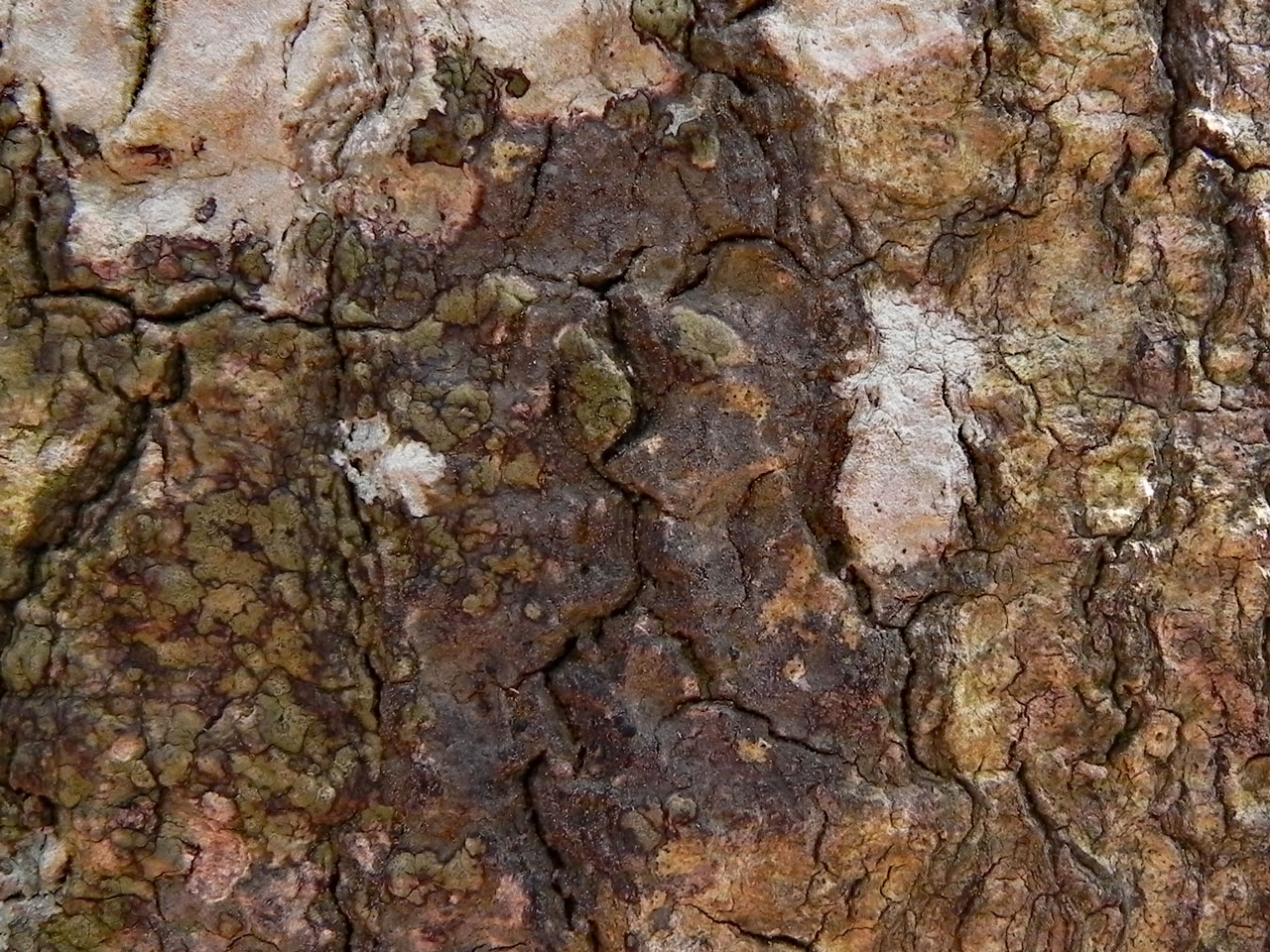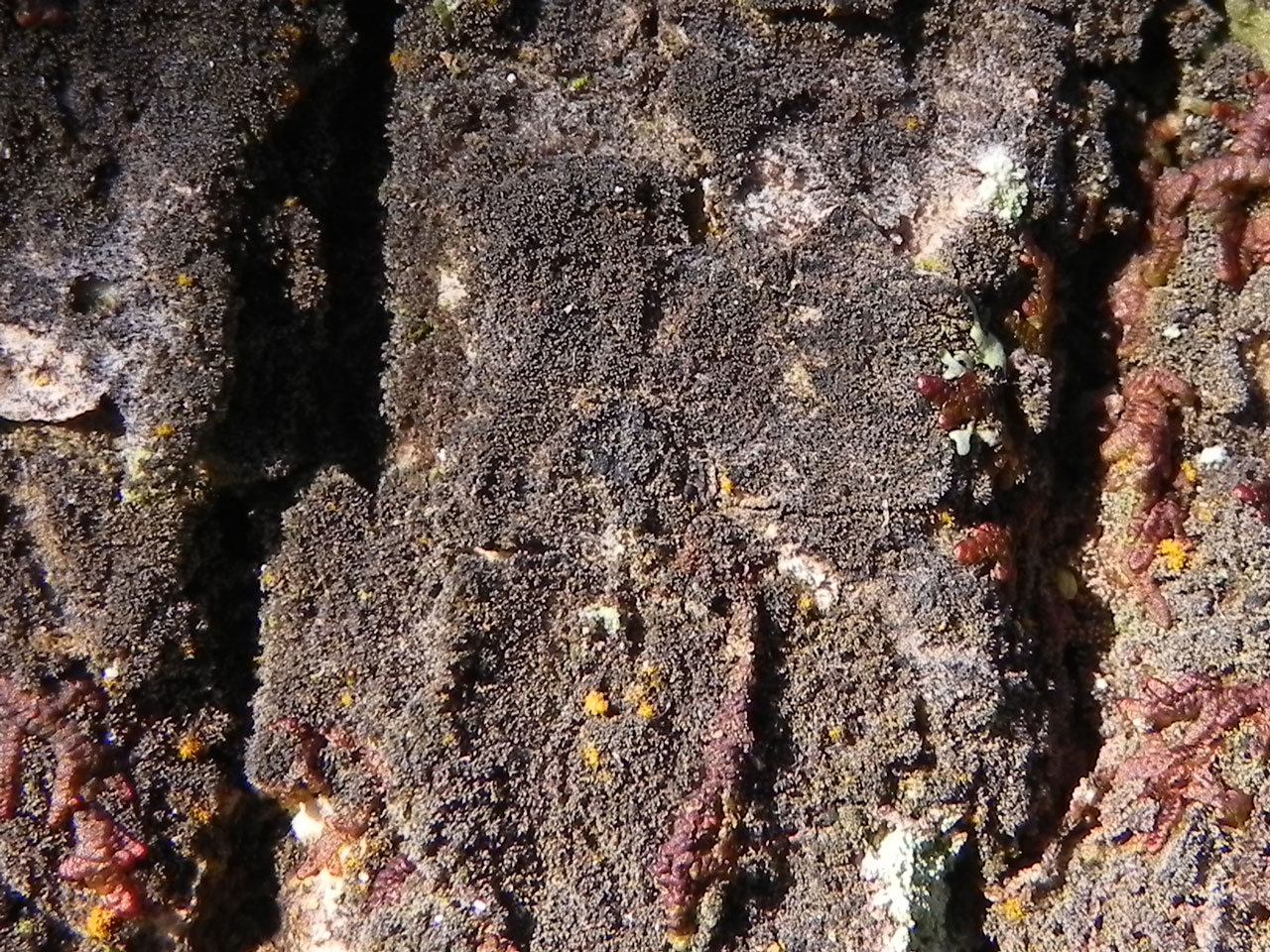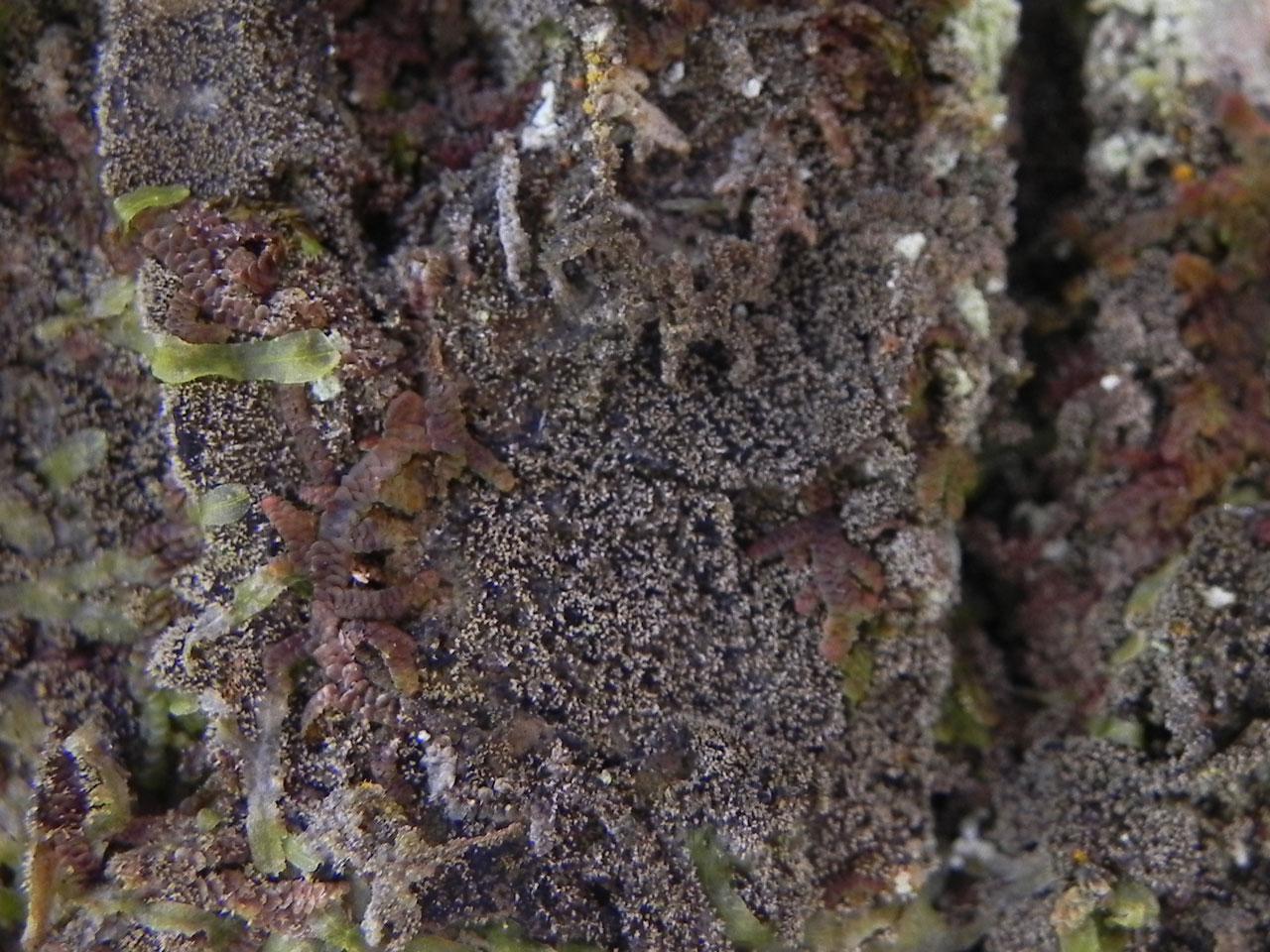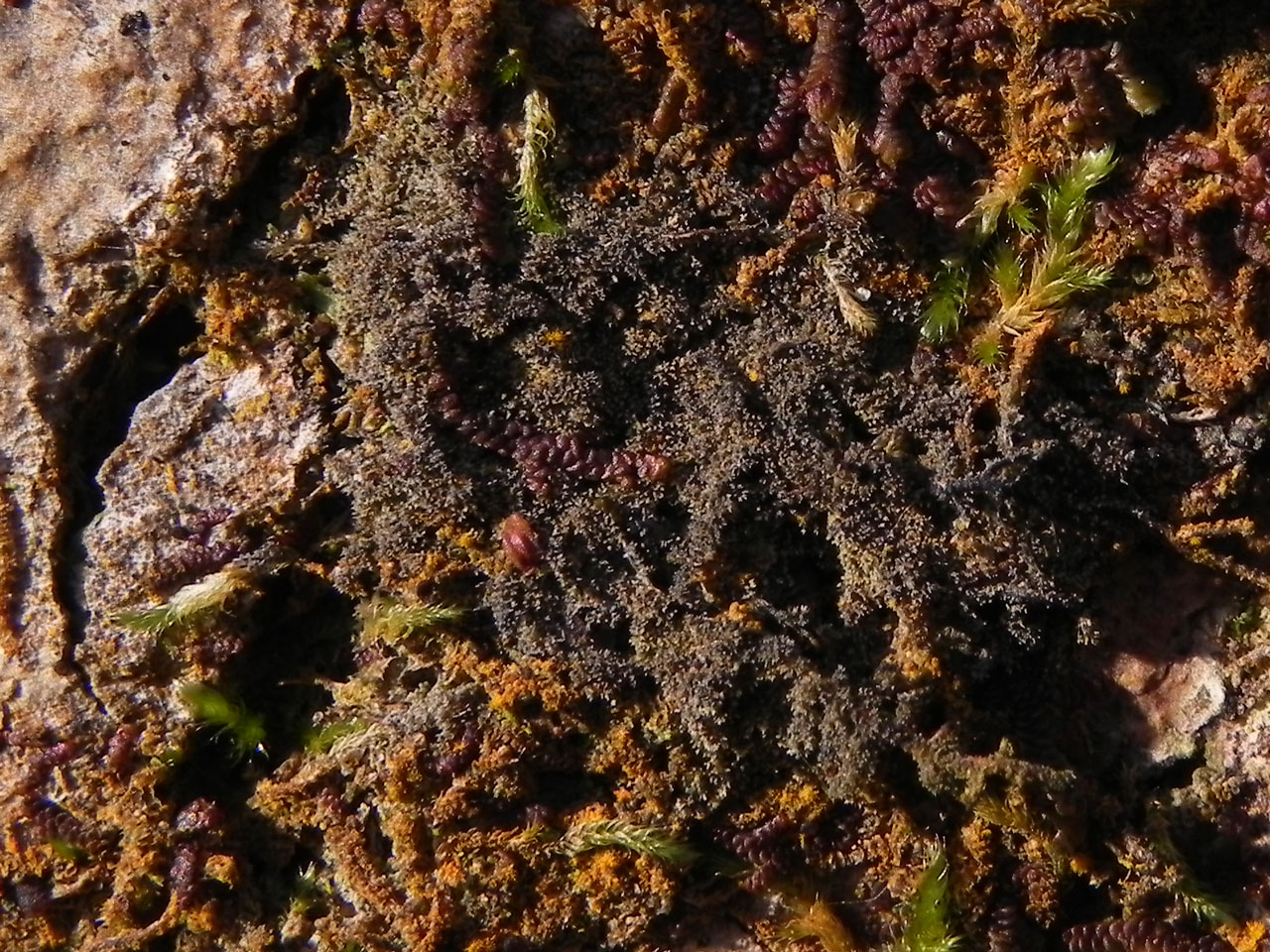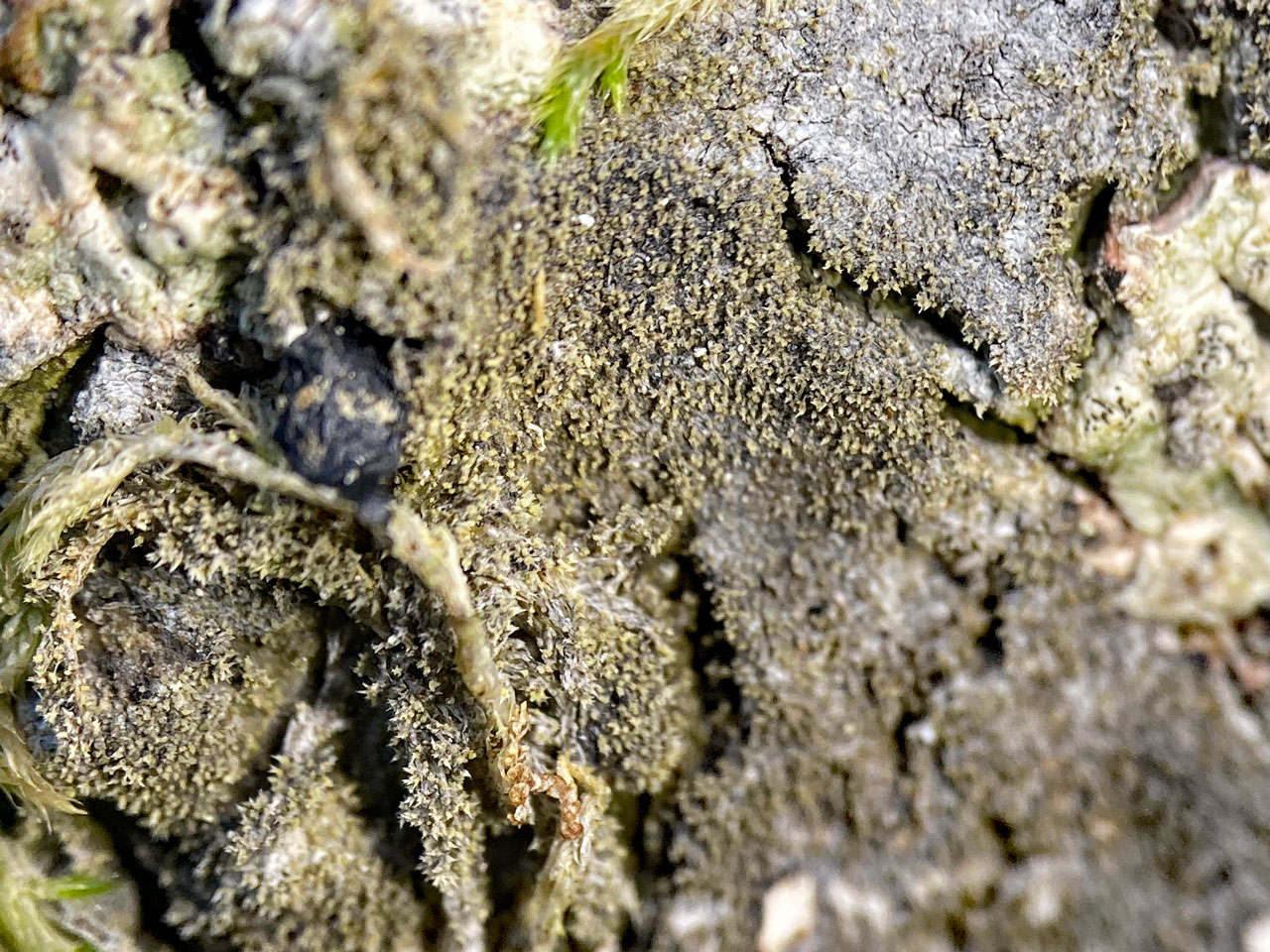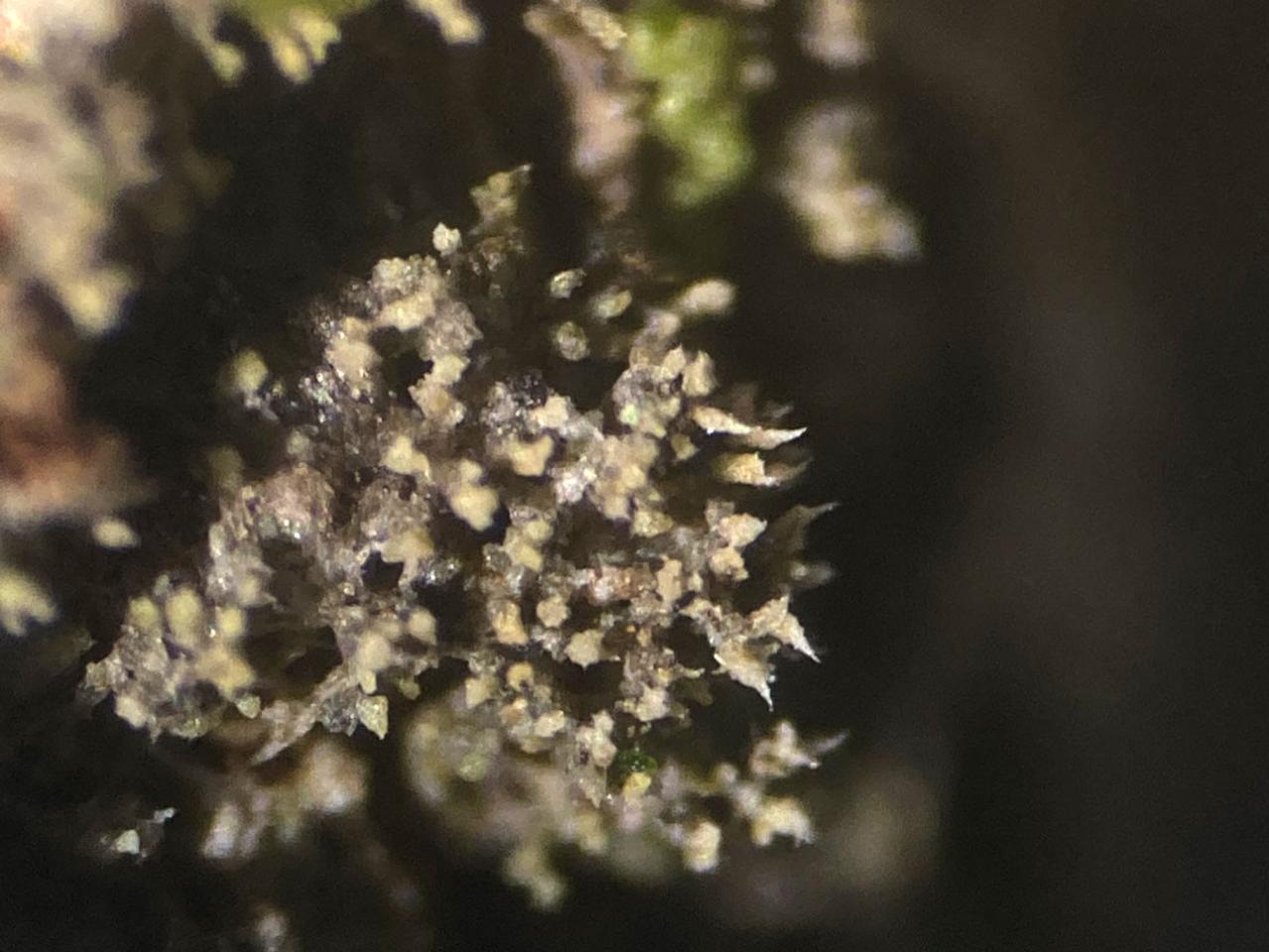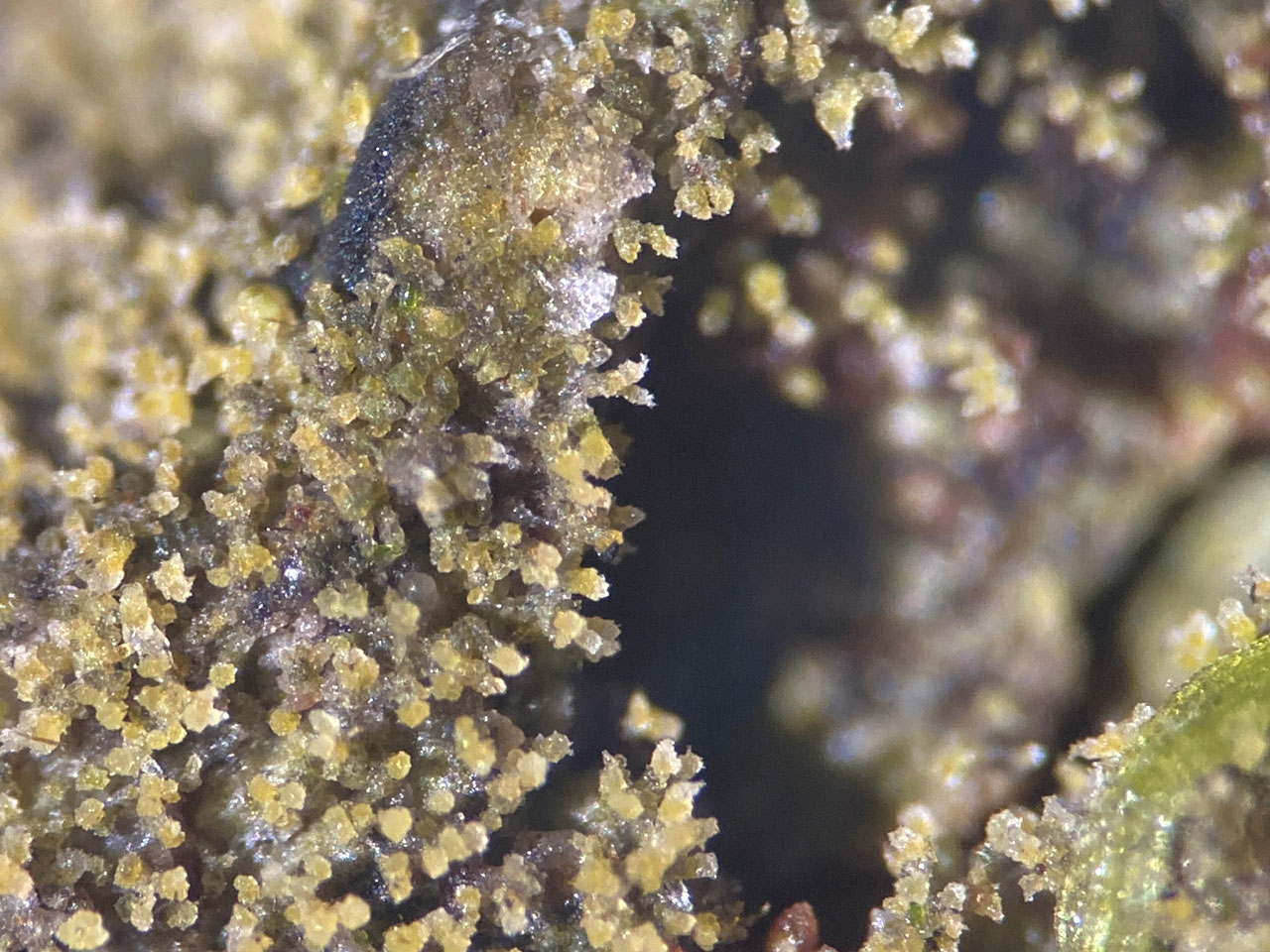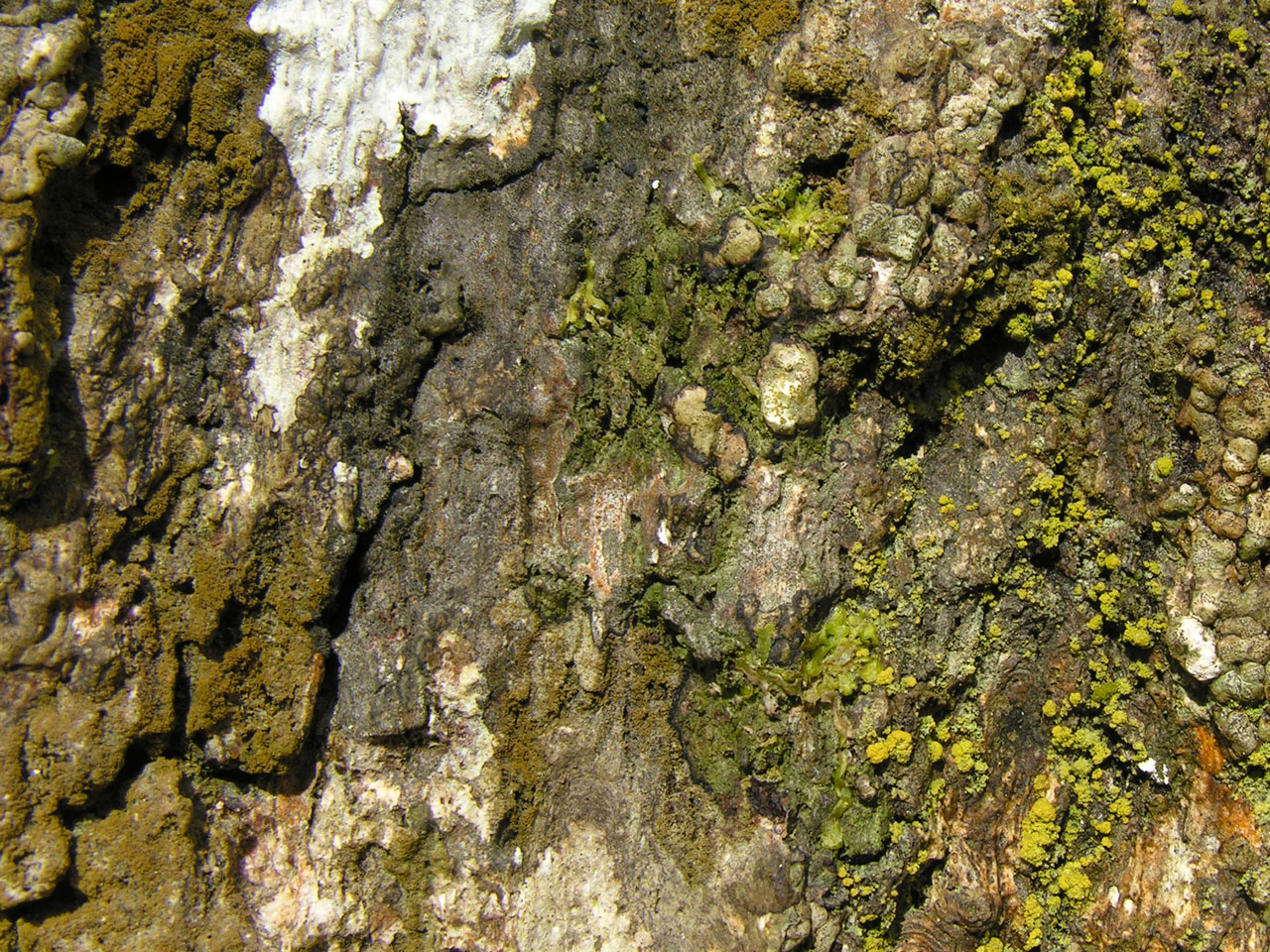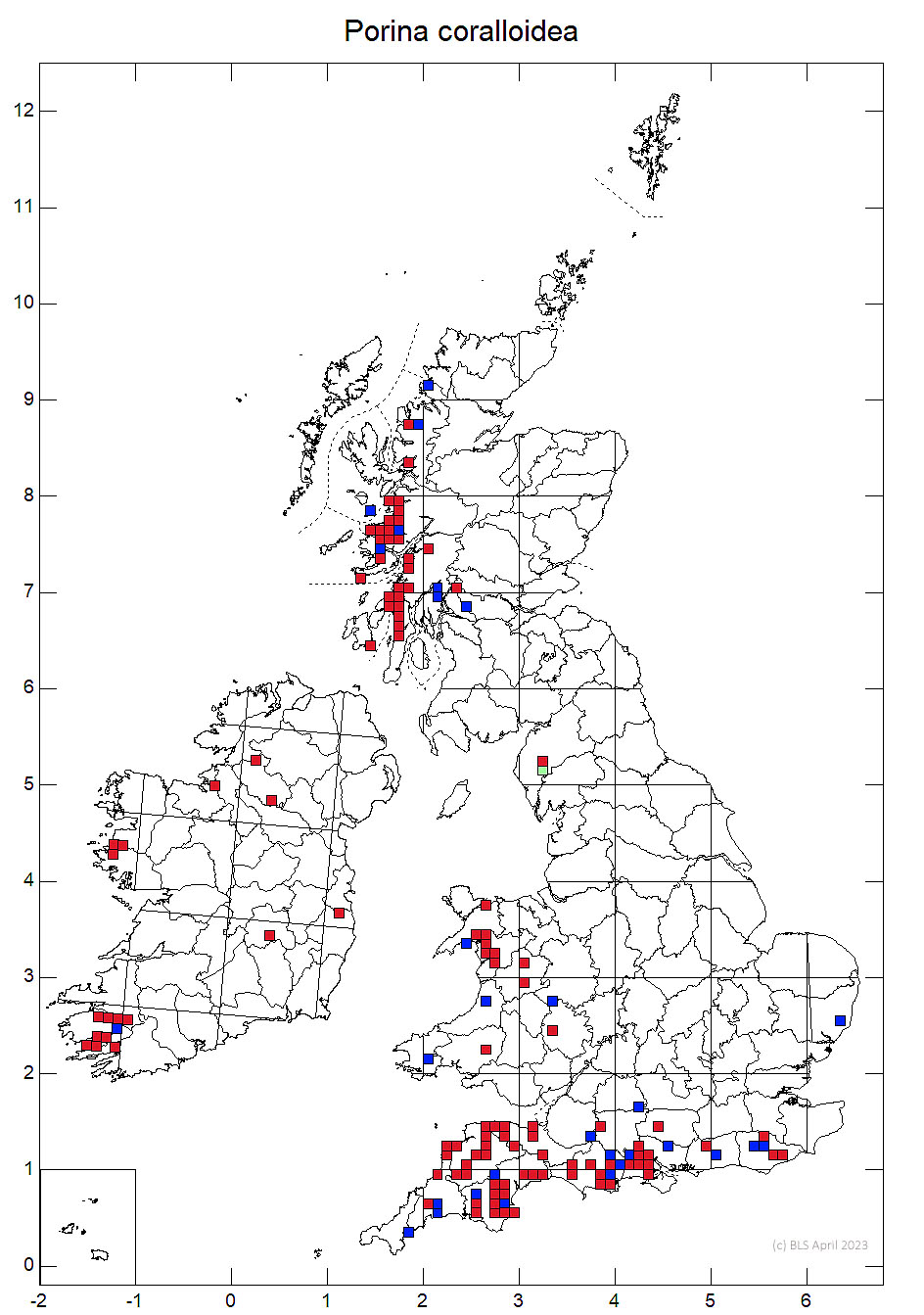Porina coralloidea is usually spotted as a blackish stain on the bark of older trees. The simple black isidia topped with a pale tuft of loose hyphae on the tip are distinctive and obvious on strongly isidiate specimens. Often however, the isidia can be sparse and one needs to peer into crevices to spot them. A southern oceanic species, which is locally frequent in old woods in the south, where slowly spreads into maturing younger stands. Less frequent and more old growth dependant to the north.
Thallus superficial, dull dark grey with a pinkish or purplish tinge; isidia present, often crowded, rarely branched, cylindrical or elongate-ovoid, usually tapering to the apex, 160–210 × 40–70 μm, the apex often pale, formed of a tuft of colourless filamentous hyphae. Perithecia black, 0.3–0.4 mm diam., one to three quarters immersed, scattered and sometimes not obviously associated with the thallus; involucrellum dark purplish- brown, K+ grey-brown; exciple yellow (Porina-yellow), or with some pigment like the involucrellum. Ascospores (6-) 9- to 11 (-12)-septate, (35–) 40–57 (–63) × (5–) 8–13 (–15) μm.
Recognised in the field by the dark colour and the pointed and tufted isidia; the dark purplish brown thallus resembles that of Catinaria atropurpurea, which occurs in similar habitats, but which has no isidia. Jamesiella anastomosans has pointed isidium-like structures, but these are pale grey and contain a trebouxioid photobiont. When wet P. coralloidea takes on a more orange hue and can reassemble P. hibernica in colour, but the tufted isidia separate P. coralloidea from this species.
On bark of medium-aged to very old trees, especially Quercus, also on Fraxinus and Fagus, in old forests and parklands. Typically is some what less base rich bark than some of the other isidiate Porina species and looks a likes such as Porina hibernica and Coenogonium confusum. In the south of its range it is relatively mobile and slowly colonises into 19th stands of Oak, as in the New Forest, but it becomes more old growth dependant, and generally scarer to the north.

Local. S. England (especially New Forest in Hampshire), N.W. England (Lake District), Wales, W. Scotland.
Britain: Notable
Scotland: Priority Taxon for Biodiversity in Scotland
Orange, A., Cannon, P., Malíček, J., Sanderson, N., Coppins, B. & Simkin, J. (2021). Ostropales: Porinaceae, including the genus Porina. Revisions of British and Irish Lichens 4: 1-12.
Text by N A Sanderson, based Orange et al (2021)
